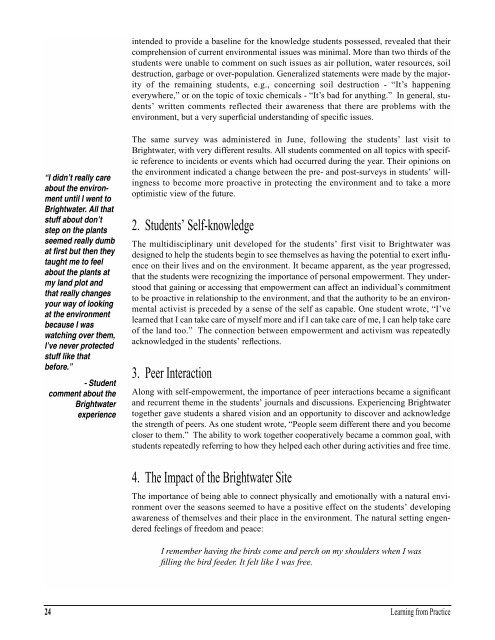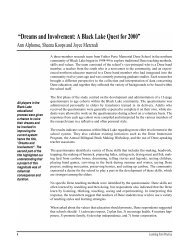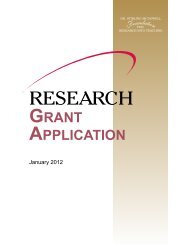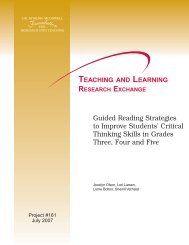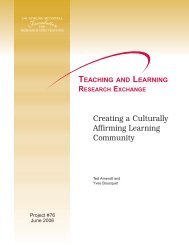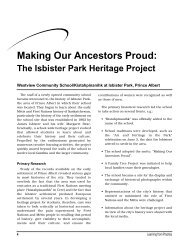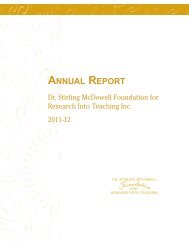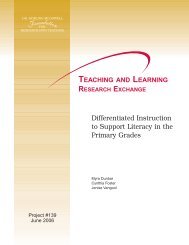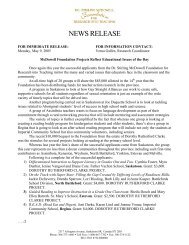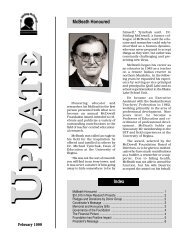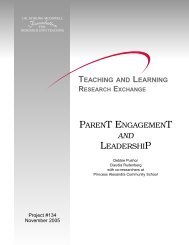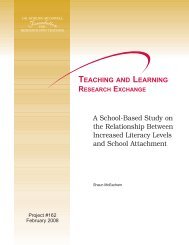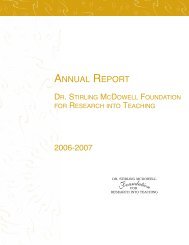Research Bulletin, Vol. 1, No. 2, 1996 - Dr. Stirling McDowell ...
Research Bulletin, Vol. 1, No. 2, 1996 - Dr. Stirling McDowell ...
Research Bulletin, Vol. 1, No. 2, 1996 - Dr. Stirling McDowell ...
Create successful ePaper yourself
Turn your PDF publications into a flip-book with our unique Google optimized e-Paper software.
intended to provide a baseline for the knowledge students possessed, revealed that theircomprehension of current environmental issues was minimal. More than two thirds of thestudents were unable to comment on such issues as air pollution, water resources, soildestruction, garbage or over-population. Generalized statements were made by the majorityof the remaining students, e.g., concerning soil destruction - “It’s happeningeverywhere,” or on the topic of toxic chemicals - “It’s bad for anything.” In general, students’written comments reflected their awareness that there are problems with theenvironment, but a very superficial understanding of specific issues.“I didn’t really careabout the environmentuntil I went toBrightwater. All thatstuff about don’tstep on the plantsseemed really dumbat first but then theytaught me to feelabout the plants atmy land plot andthat really changesyour way of lookingat the environmentbecause I waswatching over them,I’ve never protectedstuff like thatbefore.”- Studentcomment about theBrightwaterexperienceThe same survey was administered in June, following the students’ last visit toBrightwater, with very different results. All students commented on all topics with specificreference to incidents or events which had occurred during the year. Their opinions onthe environment indicated a change between the pre- and post-surveys in students’ willingnessto become more proactive in protecting the environment and to take a moreoptimistic view of the future.2. Students’ Self-knowledgeThe multidisciplinary unit developed for the students’ first visit to Brightwater wasdesigned to help the students begin to see themselves as having the potential to exert influenceon their lives and on the environment. It became apparent, as the year progressed,that the students were recognizing the importance of personal empowerment. They understoodthat gaining or accessing that empowerment can affect an individual’s commitmentto be proactive in relationship to the environment, and that the authority to be an environmentalactivist is preceded by a sense of the self as capable. One student wrote, “I’velearned that I can take care of myself more and if I can take care of me, I can help take careof the land too.” The connection between empowerment and activism was repeatedlyacknowledged in the students’ reflections.3. Peer InteractionAlong with self-empowerment, the importance of peer interactions became a significantand recurrent theme in the students’ journals and discussions. Experiencing Brightwatertogether gave students a shared vision and an opportunity to discover and acknowledgethe strength of peers. As one student wrote, “People seem different there and you becomecloser to them.” The ability to work together cooperatively became a common goal, withstudents repeatedly referring to how they helped each other during activities and free time.4. The Impact of the Brightwater SiteThe importance of being able to connect physically and emotionally with a natural environmentover the seasons seemed to have a positive effect on the students’ developingawareness of themselves and their place in the environment. The natural setting engenderedfeelings of freedom and peace:I remember having the birds come and perch on my shoulders when I wasfilling the bird feeder. It felt like I was free.24Learning from Practice


